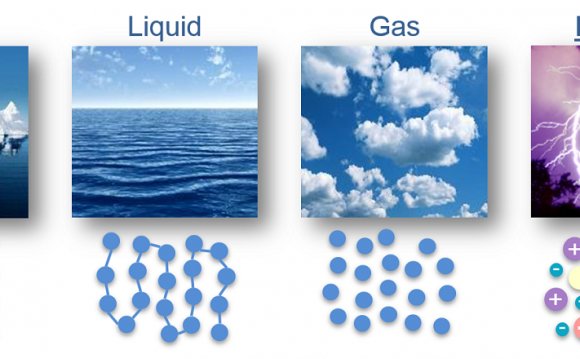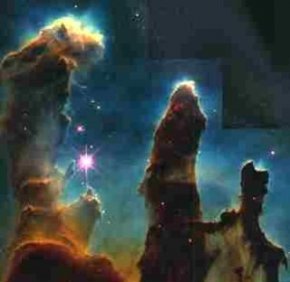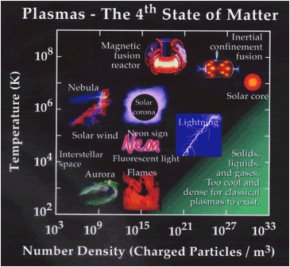

 BASICS | | Photo Gallery
BASICS | | Photo Gallery
Star formation in the Eagle Nebula
Space Telescope Science Institute, NASA
Plasma is by far the most common form of matter. Plasma in the stars and in the tenuous space between them makes up over 99% of the visible universe and perhaps most of that which is not visible.
On earth we live upon an island of "ordinary" matter. The different states of matter generally found on earth are solid, liquid, and gas. We have learned to work, play, and rest using these familiar states of matter. Sir William Crookes, an English physicist, identified a fourth state of matter, now called plasma, in 1879.
Contemporary Physics Education Project
Plasma temperatures and densities range from relatively cool and tenuous (like aurora) to very hot and dense (like the central core of a star). Ordinary solids, liquids, and gases are both electrically neutral and too cool or dense to be in a plasma state.The word "PLASMA" was first applied to ionized gas by Dr. Irving Langmuir, an American chemist and physicist, in 1929.
Copyright1994 General Atomics
Plasma consists of a collection of free moving electrons and ions - atoms that have lost electrons. Energy is needed to strip electrons from atoms to make plasma. The energy can be of various origins: thermal, electrical, or light (ultraviolet light or intense visible light from a laser). With insufficient sustaining power, plasmas recombine into neutral gas.
Plasma can be accelerated and steered by electric and magnetic fields, which allows it to be controlled and applied. Plasma research is yielding a greater understanding of the universe. It also provides many practical uses: new manufacturing techniques, consumer products, the prospect of abundant energy, more efficient lighting, surface cleaning, waste removal, and many more application topics.
Security guard in los angeles home los angeles security guard.
YOU MIGHT ALSO LIKE












